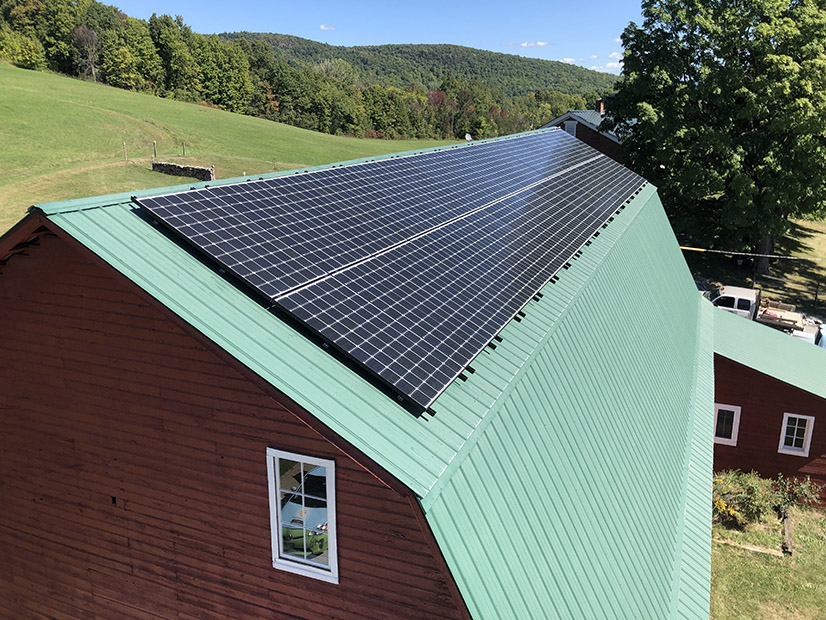
The Vermont Climate Council is considering a social cost of carbon (SCC) for 2022 of $124/metric ton of CO2 (MTCO2).
That figure is based on calculations released in June by the New York State Department of Environmental Conservation (DEC) for its value of carbon guidance to state agencies.
The council’s Subcommittee on Science and Data on Monday recommended that the state follow DEC’s model for establishing an SCC for use in analyzing proposed emission mitigation scenarios for Vermont’s first climate action plan.
An SCC sets a value for the emission reductions that would come from the proposed mitigation scenarios for input in benefit-cost and economic analyses. It is designed to demonstrate a deeper understanding of the value of investments in reducing emissions beyond monetary costs and benefits.
The subcommittee established guidelines for estimating the SCC, finding that the best option is to use a global damage-based approach with a 2% discount rate, Jared Duval, council member and subcommittee co-chair, said during the council’s monthly meeting.
A damage-based SCC approach sets a value for damages in relation to a unit of emissions, e.g., metric ton.
“The only way, in terms of the context of [SCC], that we can be taking responsibility for the costs that Vermont’s greenhouse gas emissions create globally is by using a global damage-based estimation, which is what most jurisdictions are using, recognizing that our emissions do not respect state borders or national borders,” said Duval, who also is executive director of the Energy Action Network.
In its value of carbon guidance, DEC said that a discount rate “reflects the rate at which society as a whole is willing to trade off a value received today with a value received in the future.”
The discount rate, Duval said, is “a question of ethics,” and the council may want to “deliberate more deeply on this question and reserve the option to suggest a different discount rate.”
Based on calculations released by DEC, a 2022 SCC without the discount rate (i.e., 0%) is $2,119/MTCO2. It is $53/MTCO2 at 3% and $411/MTCO2 at 1%. The SCC gradually increases over time, reaching $129/MTCO2 in 2025 and $137/MTCO2 in 2030, with the 2% discount rate.
“We recognize that this is an area of evolving research and improving methods all the time,” Duval said. “The federal [Interagency Working Group on the Social Cost of Greenhouse Gases (IWG)] will have a report out towards the end of this year or the beginning of next year, and we want to keep our finger on the pulse of that work to see if in the future it is appropriate to update [the rate].”
In February, the Biden administration updated the federal SCC to $51/MMTCO2 for use in decision making based on a 3% discount rate. The IWG said in its technical support document for the updated value that evidence “strongly suggests” the rate should be lower.
How a Discount Rate Plays Out
The discount rate converts future damages into present-day value and helps determine how much weight is placed on impacts that occur in the future, according to Resources for the Future, which helped inform DEC’s value of carbon guidance. A lower discount rate increases the weight of future impacts.
In its work, Duval said, the subcommittee focused on the “intergenerational equity implications of choosing a discount rate that would ask us to do more sooner, rather than delay action into the future.”
That thinking plays out in the analysis of an emission mitigation measure, such as converting a fleet of buses to electric, by increasing the benefits side of a benefit-cost analysis.
An expected decrease in emissions in tons from the fleet conversion is multiplied by the SCC, and that result is placed in the benefits column. A high discount rate creates a lower SCC, so the total project benefits may not outweigh the costs. But if the SCC is higher, the benefits are more likely to outweigh the costs, thereby encouraging decision makers to move forward with the project to deliver long-term change for future generations.
Coming Up
The SCC methodology under consideration by the council does not clearly identify whether it is for carbon only, according to Duval. Vermont’s Global Warming Solutions Act of 2020 targets the reduction of GHGs, not just carbon.
“We are doing further research to identify whether what we really mean by a social cost of carbon is a social cost of carbon dioxide equivalent,” which includes all harmful GHGs, he said. “We will get further guidance on the very robust and broad work that is happening by the federal IWG on that question.”
The subcommittee expects to give additional recommendations to the council at the next meeting in September on methods for GHG-emission accounting and measuring emissions sinks and net emissions in the state’s carbon budget.


